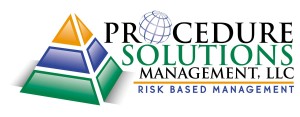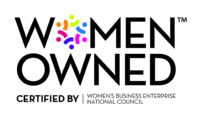
Your resume is an opportunity to showcase your skills and qualifications to employers and stand out in a sea of other job seekers. However, creating a resume is often a daunting task.
Your resume is an opportunity to showcase your skills and qualifications to employers and stand out in a sea of other job seekers. However, creating a resume is often a daunting task. It’s not naturally intuitive to know where to start, what to include, and what to leave out. There are an overwhelming number of rules for how a resume should look, and these rules are changing all the time. In this blog, I’ll cover some resume do’s and don’ts from an HR perspective that will help you take pride in your capabilities and what you hope to achieve in your career.
Do Review the Entire Job Description
Apply to jobs where you can fulfill the requirements listed, and your resume can reflect those requirements. Do not apply to a job based solely on the title or posted pay range. Read the job description like a checklist and compare that to your qualifications to see if you are a suitable applicant. You do not have to tick all the boxes to apply; some employers are willing to train the right candidate. Confirm you have the minimum level of education, training, and skills needed to fulfill the job.
Don’t List Your Job Experience in Paragraph Form
Use simple and direct statements to describe your experience and skills. Refrain from paragraph form when writing a description for your current and past positions. Using bullet points with concise wording will help the reviewer retain information about your skills and past roles. When the recruiter narrows down the candidate pool, this will allow for quick re-reads of your resume. Avoid overusing industry-specific language or acronyms unless they are in the job description. These terms may not be familiar to the recruiter reviewing your resume.
Do Highlight Your Most Relevant Experience
List your current and past jobs sequentially, with the most recent at the top. The experience you list should be relevant to the job you are applying for. Include previous positions with similar responsibilities that allowed you to practice relevant skills. Do not mention experiences that aren’t relevant to the job description. This will clog up your resume, making it harder for the recruiter to see your relevant experience. Ensure your bullet points highlight specific experiences, skills, and accomplishments directly or closely related to that job.
Include your education, certifications, degrees, diplomas, and industry-specific courses to show that you continually challenge yourself to grow professionally. This information is especially valuable if you’re a recent graduate or new to the field and possess minimal experience. With technology at our fingertips, there is no limit to improving and diversifying our skills. Take advantage of online certifications, courses, and online industry resources to help you land your next job.
Don’t Exceed the Recommended Page Limit
The length of your resume is crucial as well. A rule of thumb is to keep your resume length at one page. Two pages are acceptable if you have more than a decade of experience. You can easily achieve this by following the points we talked about earlier. The most helpful way to accomplish this is to ensure you do not include unrelated job experiences and to be direct and concise in your descriptions and skills.

Ensuring that your resume is concise, relevant to the job description, and free of grammatical errors and inconsistencies are just a few ways you can make your resume shine
Don’t Get Too Personal
Personal information such as name, phone number, email address, and LinkedIn (if applicable) helps recruiters contact you to schedule an interview. You can also include your city and state so the recruiter knows if your commute is realistic. You should not include any other personal information.
Refrain from personal details such as marital status, social security number, or number of children. This information is only relevant during the onboarding process for taxes (withholding taxes, W2, etc.) and health insurance benefits.
Do Review and Proofread Your Resume
Finally — review, review, review! Always proofread your resume and have someone else proofread it too. After creating your resume, step away for an hour or more to clear your head. Revisit your resume later when you feel refreshed and your mental resources are replenished. This practice helps relieve stress, allowing you to catch errors and make improvements. Remember, this is a potential employer’s first impression of you. Grammatical errors and inconsistencies are not professional on a resume.
Do Make the Job Search Easier for You
A personal tip is to create a complete master resume listing all your professional experience, education, and skills. This master resume will be for personal use only; you will not share this with recruiters. Then, you can narrow this down to 1-2 pages and tailor this to the job postings you are qualified for using the do’s and don’ts in this blog. This method should alleviate some of the stressors of building a resume and help you stand out as a qualified candidate.
Resume writing doesn’t have to be a daunting task. While the rules for creating a resume are constantly changing, these do’s and don’ts are mainstays that will help you stand out from other job seekers. Ensuring that your resume is concise, relevant to the job description, and free of grammatical errors and inconsistencies are just a few ways you can make your resume shine.




